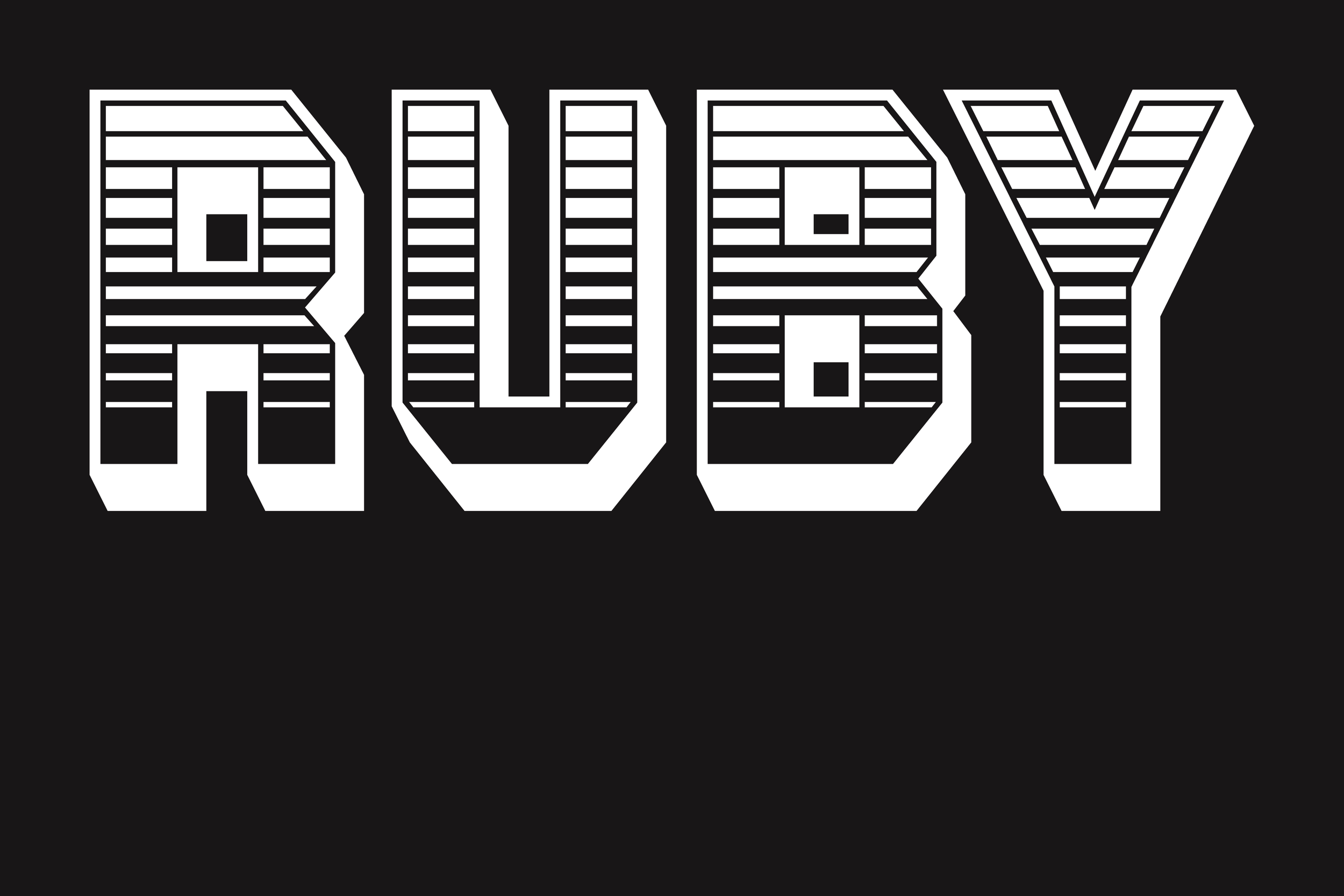VTC Ruby has gone by several names throughout history: “Gothic Shade,” “Tombstone,” “English Ornamented,” and more. But beyond the name, the history is even more complicated.*
During the 1850’s a type foundry in Boston, known as the Dickenson Type Foundry, stole a typeface from a foundry in France, redesigned the ‘M,’ modified the ‘N,’ and named it Gothic Shade.
Then came American Type Founders (ATF) in 1892. It was a business trust created by the merger of 23 type foundries (including the Dickenson Type Foundry), representing about 85% of all type manufactured in the United States.
ATF was the dominant American manufacturer of metal type from its creation in 1892 until at least the 1940s; it continued to be influential into the 1960s.
With the merging of these foundries, came the merging of their catalogs. And with that came Jim Crow.*
Jim Crow is the American Type Founders' 1933 and 1949 re-casting of the Dickinson Type Foundry's type of the 1850s, Gothic Shade.*
Beyond the name of this typeface, “Jim Crow” is a lot of things. On one hand, “Jim Crow” is a stage character by Thomas D. Rice. The character is dressed in rags and wears a bed hat and torn shoes. Rice applied blackface makeup made of burnt cork to his face and hands and impersonated a very nimble and irreverently witty African American field hand who sang a remixed slave song called “Jump Jim Crow” (1828).
This stage character was widely copied. However, The "Jim Crow" character as portrayed by Rice popularized the perception of African-Americans as lazy, untrustworthy, dumb, and unworthy of integration.*
With these perceptions of African Americans, there came Jim Crow laws. Jim Crow laws were state and local laws that enforced racial segregation in the Southern United States. These laws were enacted in the late 19th and early 20th centuries by white Southern Democrat-dominated state legislatures to disenfranchise and remove political and economic gains made by black people during the Reconstruction period. Jim Crow laws were enforced until 1965.
Jim Crow laws and Jim Crow state constitutional provisions mandated the segregation of public schools, public places, and public transportation, and the segregation of restrooms, restaurants, and drinking fountains between white and black people. *
As the idea of “separate but equal” drifted further and further from the truth, the Jim Crow font and stereotype made their way into pop culture. For example, one of the characters in “DUMBO” (who taught Dumbo how to fly) was named “Jim Crow” (an actual crow). The font (Jim Crow) was also used in several variations of posters for the film.
For the longest time, I wondered what posses the people at ATF to name this font “Jim Crow.” But when you see this “Dumbo” poster, you might think that it does have a circus vibe. Kind of like the performances one might see from the 1800’s stage character.
LMPC via Getty Images
As Jim Crow is one of the worst font names in the history of the type industry (along with Hobo), this revival has more than a few design tweaks, but a whole new name——VTC Ruby.
On November 14, 1960, Ruby Bridges became a symbol of the U.S. civil rights movement. She was just 6 years old. Her simple act of going to an all-white school marked the beginning of integration for U.S. public schools.
Bridges was born in Tylertown, Mississippi, on September 8, 1954. A few months before her birth, the Supreme Court—the nation’s highest court —had issued a ruling on five combined cases that would impact not only Bridges’s life, but also change the course of American history.
In Brown v. Board of Education of Topeka, Kansas, the prosecution wanted to end the idea of “separate but equal schools.” In many places in the U.S., black students and white students could not attend the same school. On May 17, 1954, the Supreme Court ruled that segregation in U.S. public schools was against the constitution. In his opinion, Chief Justice Earl Warren stated that “in the field of public education the doctrine of ‘separate but equal’ has no place. Separate educational facilities are inherently unequal…”
Although it was illegal to have segregated schools, some states—especially in the South—did not follow the ruling. The Supreme Court was aware of the resistance and took action. A year after the ruling, the court declared that the desegregation of public schools should advance with “all deliberate speed.” Five years later, little Ruby would become the first student to integrate a Southern elementary school.*













